I first met my next guest poster on my many trips into Hathern, while delivering my youngest child to band practice at the band hut on Pasture Lane, and at many Hathern Band concerts. This wonderful post, from a retired engineer, covers everything wildflower - from Richard Pulteney to Andrew Bloxham, from our Lammas Meadows (a designated Coronation Meadow in 2012), to mistletoe, from the Hathern Wildlife Group to the RSPB and is accompanied by some stunning photos! Read on to find out more from Dave ...
Being a
Botanist
Dave Neville
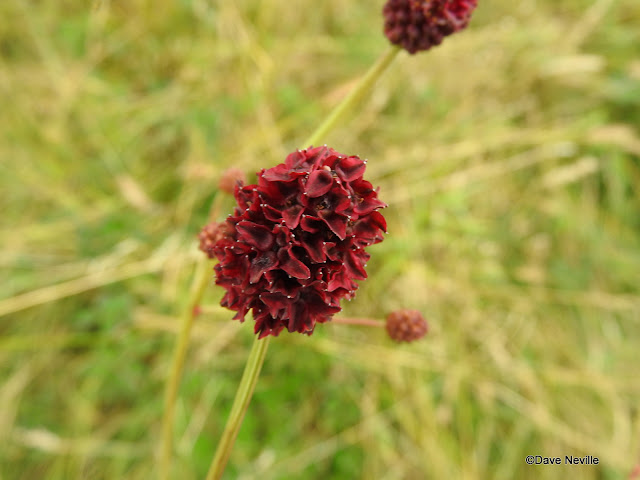 |
| Greater Burnet |
“Are you all right, can we help?” I’m lying on the ground and a passerby is concerned. I haven’t fallen over – I’m down there examining a plant. For my sins, I am an amateur botanist, and I’m sure most botanists have had an experience like this at some time.
I’ve been interested in plants since I was young. I grew up in the 1950s in a Northumbrian country village and we knew most of the names of wild flowers we came across while playing in the meadows. Added to that we were taught “Nature Study” at school which reinforced our knowledge. We were required to make pressed wild flower collections – something that would be frowned upon today. None of this seemed at all unusual at the time and we competed to have the largest collection – a bit like collecting Pokemon cards today. For the plants we didn’t know, we had the Observer’s Book of Wild Flowers as a reference [1]. Does anyone remember this? First published in 1937, it was pocket sized and at five shillings, was the only reference book within our pocket money budget. It was excellent, though frustrating in that only alternate pages were in colour which could be a challenge if the flower you were trying to identify was a line drawing. And of course, not all wild flowers were in there meaning we sometimes had to seek help from elsewhere.
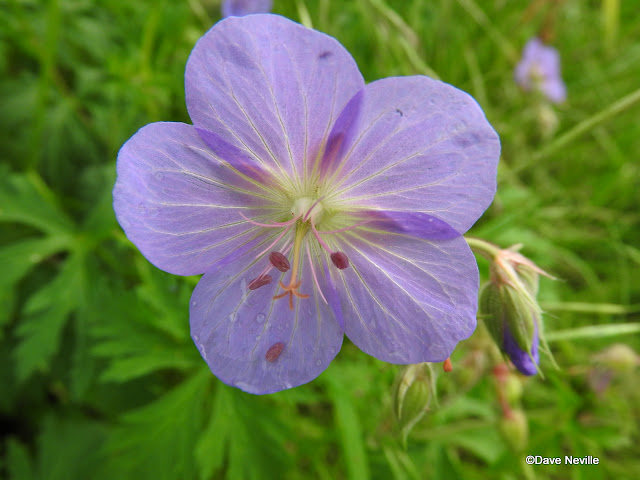 |
| Meadow Cranesbill |
Knowledge of wild plants has gone downhill since then. The Plantlife charity has 15,000 members whereas the Royal Society for the Protection of Birds boasts 1.2 million, that says a lot. Botanists are few and far between. So too are the ancient hay meadows I played in when I was young. However, Loughborough has a marvellous ancient meadow – Loughborough Big Meadow. It is a Lammas meadow of which there are only 20 left in the country [2]. These meadows were divided into plots with each owner entitled to cut the hay from their plot. If they didn’t want the hay, it was put up for auction – this year was the 140th auction at Loughborough. After cutting, the grass was allowed to grow until Lammas Day (1 August) when the plot owners could allow their stock to graze on the whole meadow.
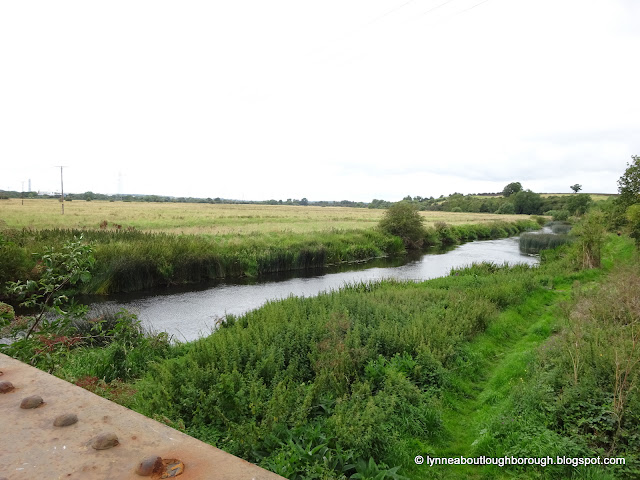 |
| Lammas Meadow to the left of the River Soar, looking over the road bridge on Meadow Lane. Taken 1 August 2023 |
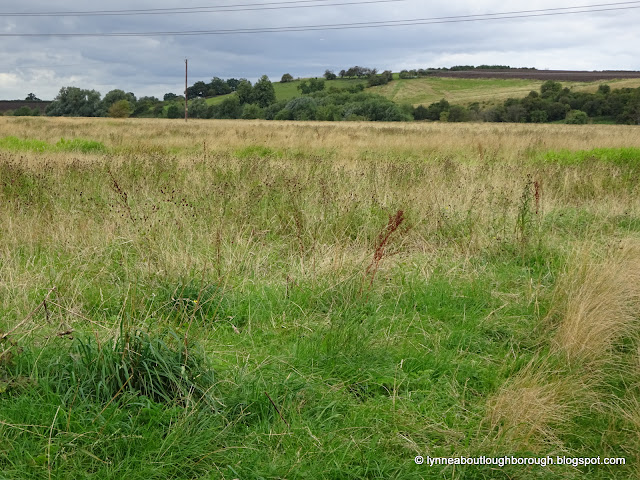 |
| Lammas Meadow on 1 August 2023, looking towards the hill at Stanford-on-Soar |
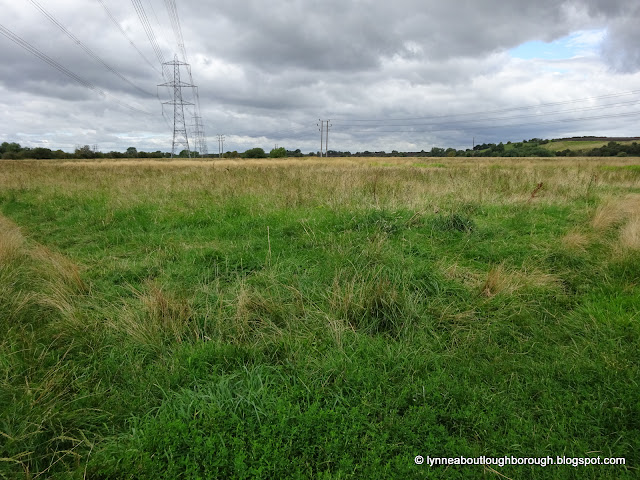 |
| Lammas Meadow from Meadow Lane looking towards Dishley, taken 1 August 2023 |
 |
| Cows grazing on the Lammas Meadow, looking towards Dishley, taken 19 August 2020 |
The Big Meadow is a Site of Special Scientific Interest, managed by Leicestershire and Rutland Wildlife Trust (LRWT). In 1965 there were 20 plot owners, but over the years the Trust has bought up more land so that today there are only six. The meadow is home to a range of interesting plants including the rare narrow-leaved water-dropwort at its only site in Leicestershire, first recorded there in 1830 by Rev. Andrew Bloxam [3]. He was for many years Rector of Twycross and his arrival gave considerable impetus to the study of botany in Leicestershire.
 |
| Narrow-leaved water-dropwort |
Before Andrew Bloxam there was Richard Pulteney (1730-1801) [4], who can justly be described as the father of Leicestershire botany. He was born in Mountsorrel and educated in Loughborough. At the age of 15 he was apprenticed to a Loughborough apothecary. While still a young man, between 1747 and 1752, he produced three manuscripts describing over 600 plants in the county, many of which have now been lost. He corresponded with prominent botanists of the time such as George Deering and John Blackstone and his manuscripts provide clues to early landscape features in the county before the enclosure of common land and subsequent changes in agriculture.
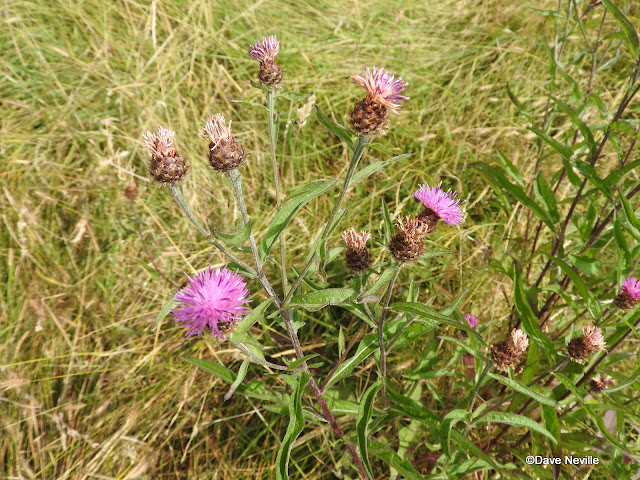 |
| Common Knapweed |
Mistletoe was first recorded in
Leicestershire by Richard Pulteney, though no doubt it had been around long
before that. These days it can be found all over town. Mistletoe is what’s
called a hemiparasite – it has chlorophyll so can produce its own food, but it
relies on its host tree for water, nutrients and support. It is also unusual in
that it is dioecious, meaning that it has separate male and female plants, and
only the female plants produce berries.
 |
| Mistletoe |
When I first became interested in
Loughborough’s mistletoe, there was a theory that it emanated from old orchards
in Thorpe Acre. However, looking at past records and talking to longtime
residents, it appears there was some around, but it had expanded greatly in the
last thirty years. Moreover, this wasn’t just a Loughborough phenomenon.
Studies in other parts of the country have shown similar results. Why should
this be? It appears that it is linked to
the rise in the number of overwintering blackcaps. The blackcap is a type of
warbler we see during the summer, however in the last thirty years many are
preferring Britain to their normal winter home in Africa because of our milder
winters and available food such as mistletoe berries. Blackcaps love them; they
eat the flesh and then wipe the sticky seed onto tree trunks. Thrushes and
other birds eat the whole berry then deposit the seeds with their droppings, the
blackcap way means that mistletoe gets around faster.
The Hathern Wildlife Group has
been recording the locations of trees with mistletoe in Loughborough and beyond
for the last two years. This isn’t the easiest of tasks as it’s really only
possible to spot mistletoe when the trees aren’t in leaf. However, that’s the
more difficult time for identifying tree species so mistletoe recording, while
mostly in the winter, also sometimes needs summer visits to confirm the tree
species. There’s another complication. As mistletoe has separate male and
female plants, determining which is which is not an easy task if the plant has
no berries. Close inspection is needed, which is usually difficult unless you
do a bit of climbing. So, a plant without berries could be male, or it could be
female which has been stripped of berries by the blackcaps and their pals. This
means that recording is best done early in the winter before berries disappear.
Well over 100 trees with mistletoe have been recorded so far in Loughborough, Hathern and Shepshed and a survey of the trees on the university campus is planned for this winter. So, instead of lying on the ground, no doubt I’ll now have concerned passersby trying to get me down from a tree. It’s fun being a botanist!
The author would like to thank Chris Hill, Conservation Officer with the Leicestershire and Rutland Wildlife Trust for the information about Loughborough Big Meadow.
%20with%20Chris%20Hill%20(LRWT).JPG) |
| Dave Neville, left, Chris Hill of the Leicestershire and Rutland Wildlife Trust, right |
____________________________________
Biography
Dave Neville is a retired professional engineer who moved to Loughborough in 1993. Now living in Hathern, Dave was a parish councillor for many years and is now involved in conservation projects as part of the Hathern Wildlife Group.
____________________________________
Editor's Notes
[1] Oh yes, I remember pressing wild flowers! I've still got the foolscap ring binder full of what are now completely unrecognisable straw-coloured plants! I also thought I used to use the Observer's Books, but when I came to look at my collection I seemed to be missing the one on wild flowers, but I do remember using the Collins book!
 |
| A pressed flower from Editor's collection |
[2] I touched upon Loughborough's Lammas Meadow in a post from one of my lockdown walks, and there is also an entry in 'A-Z of Loughborough'. Incidentally, there is a newish road in Hathern, off the Shepshed Road, which is called Lammas Drive - I wonder why ...?
[3] The Reverend Andrew Bloxham contributed the botanical information to Thomas Rossell Potter's 'The History and Antiquities of Charnwood Forest'
 |
| Title page |
[4] Richard Pulteney is mentioned in my blogpost about the Loughborough Grammar School, and wildflowers he noted were found in the field opposite what is now the Bull-in-the-Hollow. This field is now covered in houses. Pulteney is also an entry in 'A-Z of Loughborough'.
____________________________________
Posted by lynneaboutloughborough
With apologies for
typos which are all mine!
_______________________________________________
Thank you for reading this blog.
Copyright:
The copyright © of all content on this blog rests with me, or in the case of guest blogposts, with the named Guest Blogger. However, you are welcome to quote passages from any of my posts, with appropriate credit. The correct citation for this looks as follows:
Neville, Dave (2023). Being a Botanist. Available from: https://lynneaboutloughborough.blogspot.com/2023/07/being-botanist.html [Accessed 4 August 2023]
Take down
policy:
I post no pictures that are not my own, unless I have express permission so to do. All text is my own, and not copied from any other information sources, printed or electronic, unless identified and credited as such. If you find I have posted something in contravention of these statements, or if there are photographs of you which you would prefer not to be here, please contact me at the address listed on the About Me page, and I will remove these.
Blog
archive and tags:
If you are viewing this blog in mobile format, you will not be able to easily access the blog archive, or the clickable links to various topics. These can be accessed if you scroll to the bottom of the page, and click 'View Web Version'. Alternatively, there is also a complete list of posts, which when clicked will take you to the page you are interested in.
Searching
the blog:
You can search the blog using the dedicated search box that appears near the top of the blog when viewed in the web version. Alternatively, you can search using your usual search engine (e.g. Bing, Google, DuckDuckGo etc.) by following this example:
site: https://lynneaboutloughborough.blogspot.com/ “Radmoor House”
NOTE – the words you’re actually looking for must be in “” and the first of these must be preceded by a space
Thank you for reading this blog.
Lynne

No comments:
Post a Comment
If you have found this post interesting or have any questions about any of the information in it do please leave a comment below. In order to answer your question, I must publish your query here, and then respond to it here. If your information is private or sensitive, and you don't wish to have it on public display, it might be a better idea to email me using the address which is on the About Me page, using the usual substitutions: if you take the email route, our conversation remains private, and is not published on the blog. Thanks for reading the blog.